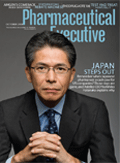What's The Buzz
What's the buzz all about? Word of mouth is more effective than we think.
No matter what brand you promote, chances are that people are talking about it. And the higher their level of involvement, the greater the likelihood that they'll feel compelled to raise the topic in conversation. It's not just high-involvement categories like breast cancer that make people talk. For every condition, there is a discussion—and you can be certain, it's already happening, with or without your involvement.

Andrew Levitt
For example, one consumer reported a recent conversation with a neighbor on the topic of ulcerative colitis: "He was in his garden watering his plants. We started talking, and I asked him why he didn't go out so much. It turns out he has the same condition as I do. He asked me why I seemed so well, and I said I was using this product and was getting better. We told him to go see his doctor and ask for that product. He did, and then he went to his son's wedding a month later—the first time he'd left the house in eight years."
In another compelling example, a consumer shared this story: "I saw this family locally in the park and I said to them, 'Gee, your kid looks so small, maybe she needs to get checked.' The mother of that child liked me and asked about my kid because she is also very small. So I told the mother everything about what medication my child takes ... and I tried to help them out. That's why God gave us a heart; we should use it to help others."
People are desperate to connect, and seek outlets to share their story, help others, and be a part of a structured community that helps people feel less alone with their condition. Pharma now has a great opportunity to shape the conversations, to be perceived as a partner in the healthcare process, and to optimize its media spend, using a tool more powerful than any TV ad—the words of the patients themselves.
Start the Conversation
Word-of-mouth communication has become a practical, measurable way for pharmaceutical companies to communicate with patients about health issues. It's a technique that is in its early days for pharma, and it must be handled with care. But word-of-mouth is a compelling concept, because it comes with the power of a recommendation from a trusted source—a friend, a family member, a business colleague—with an element of authenticity that a traditional advertisement can never match.
The goal of pharma WOM programs is to stimulate informed conversations about health conditions and to encourage people to ask their physicians about treatment options. Essential to the process is educating the consumers who participate so that they are well informed and knowledgeable about the condition in question.
The thousands of conversations that occur will be educational and informative, and will come from a trusted source—the very people who use these products or care for those who take them. These kinds of discussions can then motivate others to take action by seeing their physician, complementing existing DTC efforts.
The process of launching a WOM campaign typically starts with WOM-specific research to understand how consumers talk about certain conditions—what words they use, who they would speak to, where conversations happen, and why they occur at all. Those insights are wrapped into a recruitment process of engaging brand advocates to join a structured program. This type of direct relationship marketing puts a new spin on how to engage the folks who have opted for more information, but who are rarely contacted after that first welcome mailer.
Consumers may receive a permission-based e-mail offer from the pharma company to join an awareness program. After an individual opts in and registers on a site, he or she completes an online educational tutorial about the condition and is mailed a welcome kit. This kit includes materials that can be distributed to people who want to learn more about the health issue in question. The pass-along content includes consumer-friendly facts about the condition, and directs consumers to a microsite where they can learn more about symptoms, treatment options, and questions for physicians. (Think clear call-to-action, measurement, and engagement.)
The "brand ambassadors" then report back about their conversations by completing a brief online survey so pharmaceutical sponsors can gain insights into who is having conversations, where they are taking place, and what outcomes can be expected.
Word-of-mouth conversations typically take place off-line (see sidebar). But that doesn't mean that a WOM campaign cannot be tracked. As a place to start, you can measure and model various data points, such as the number of brand ambassadors in a program and the number of conversations that are generated as a result. You can then further explore opt-in rates from calls-to-action, time spent on Web sites, referrals to a physician's office, and of course, the number of new prescriptions that come from word-of-mouth programming.
And this doesn't even begin to consider the loyalty effect of the consumers who participate in a structured program, and receive ongoing messaging on behalf of the sponsor, encouraging compliance and brand affinity.
Overcoming Challenges
In our heavily regulated industry, a structured WOM program comes with some challenges as the control of the message is relinquished to the consumer—at least to some degree. With proper training of participants, pharma companies have the ability to impart accurate content that can then be shared with others who are interested.
People are enthusiastic to share their stories and tell others about the importance of treating a certain condition. And when they are asked (as they often are) what product they're using, it's easy and acceptable from a regulatory perspective for that individual to reveal the product that they were prescribed.
As a result, the brand gets some promotion, the consumers have had a meaningful discussion, and the ensuing dialogue that the target consumer has with a physician should be that much more productive.
Many companies remain concerned about uncovering adverse events, either from discussions that may take place between consumers—or in comments that may be made in an online community forum. The reality is that this is an issue that can be readily managed if it is handled properly, through close coordination between the vendor, pharmacovigilance, and the brand teams.
Only serious adverse events and those that are unexpected (that is, not typically seen in clinical trials or identified already in the package insert) need to be reported within 15 days to FDA; all others may be handled in a more reasonable time frame.
Of course, it is impossible to monitor what is said during an offline conversation, but by keeping the emphasis on non-branded, educational information, pharma sponsors can stay on the right side of the line. Also, when communities are moderated and focused on particular lifestyle issues (not specific products), the likelihood of uncovering AEs decreases significantly.
This type of real-world consumer feedback should also be viewed in a positive light as an early warning sign, in case there are real issues with a marketed product. It also has the benefit of showing consumers that pharma listens and is responsive about the products it sells.
Where Are We Headed?
Pharma must embrace that which is new and novel (think Internet, circa 1998), and push forward into areas that make sense for brand promotion, not just because something is "new" but because it will build your brand in a way that other media just can't.
Industry must continue to explore this dynamic area of word-of-mouth, and push through the inevitable challenges that our friends in Legal and Regulatory throw at it.
There is so much more that pharma can do to shape and influence the conversations that people have, and that can lead to increased awareness about disease states and proper treatment options by everyone involved. Additionally, consumers are enthusiastic to participate, so everyone wins in the end.
Gee, that cough of yours sounds a lot like asthma. Are you taking anything to treat that?
Andrew Levitt is the founder and CEO of HealthTalker. He can be reached at andy@healthtalker.com
The Misinformation Maze: Navigating Public Health in the Digital Age
March 11th 2025Jennifer Butler, chief commercial officer of Pleio, discusses misinformation's threat to public health, where patients are turning for trustworthy health information, the industry's pivot to peer-to-patient strategies to educate patients, and more.
Navigating Distrust: Pharma in the Age of Social Media
February 18th 2025Ian Baer, Founder and CEO of Sooth, discusses how the growing distrust in social media will impact industry marketing strategies and the relationships between pharmaceutical companies and the patients they aim to serve. He also explains dark social, how to combat misinformation, closing the trust gap, and more.
